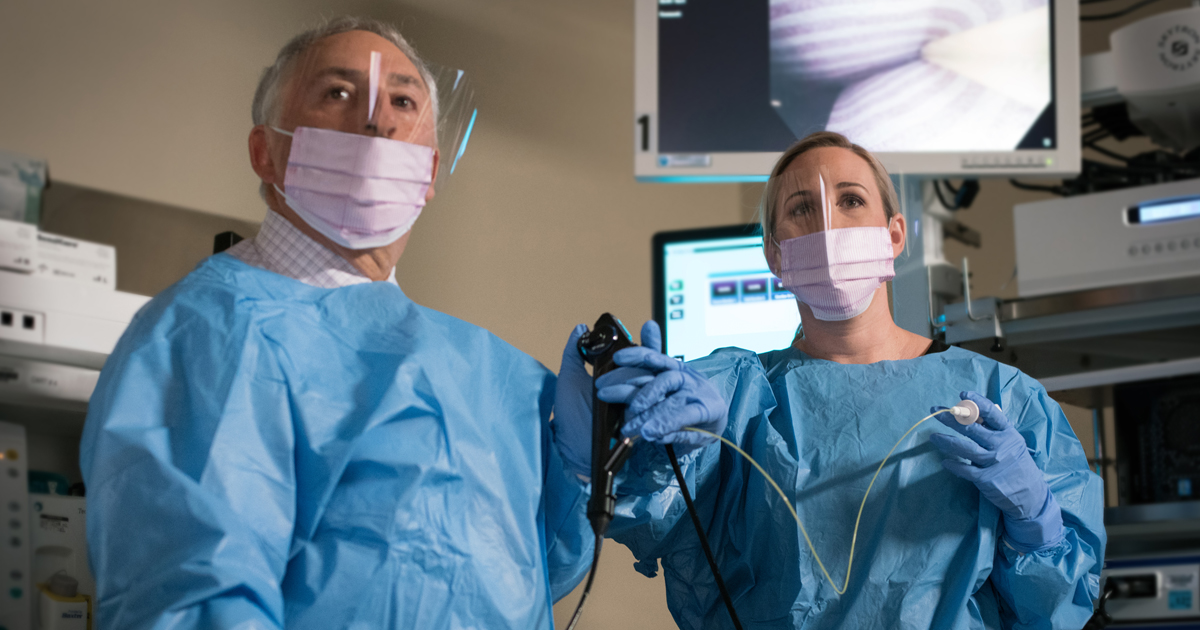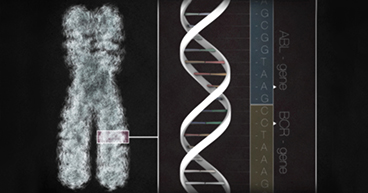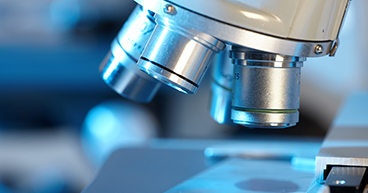
Just as Google Maps or GPS devices may help travelers find their way to new and distant places, doctors are using technology to travel through areas of the body that are difficult to navigate. Using procedures such as navigational bronchoscopy and fiducial marker placement, doctors may be able to reach the furthest recesses of the lungs to help locate and mark tumors that may otherwise be out of reach, except through traditional surgery.
What is navigational bronchoscopy?
Navigational bronchoscopy creates a roadmap of the lungs to help doctors reach a tumor. During the procedure, they can also leave fiducial markers—beacons of sorts—that help clinicians find their way back to the tumor for additional treatment later on. These procedures may allow doctors to better target small and remote lung tumors with more precise radiation therapy as an alternative to open surgery, which may not be an option for some patients. "Let's say a patient has a single lesion, and they are unable to withstand surgery because their lung function is very poor," says Dr. Sharad Chandrika, a Pulmonologist & Intensivist and Medical Director of Cardio Pulmonary at our hospital near Phoenix. "To avoid surgery, we would likely do a navigational bronchoscopy—the GPS for the lungs. It takes me to the remotest area of the lung. Once there, I can place markers around the tumor so we can pinpoint where to apply the radiation therapy."
The passages of the lung can be difficult to navigate. Like remote roads or trails, the further you stray from the main highway, the darker and narrower the paths become. In a bronchoscopy, a lighted, flexible tube is fed through the nose into the windpipe (trachea) and the wide, inner branches (bronchi) of the lungs. But many traditional bronchoscopes are not designed to navigate the twists and turns of the narrower outer bronchi. It would be like trying to drive a truck on a mountain bike trail.
Creating an airway roadmap
Before a navigational bronchoscopy procedure is performed, scans taken of the lungs are downloaded into a computer program that then generates a 3-D model. The doctor uses the model to map the best route to reach the tumor. During the procedure, a bronchoscope with a thin catheter is used to delve deeper into the lungs. Think of the catheter as the mountain bike that, because of its size and flexibility, is better able to maneuver around the branches of the lungs and through its narrowest passages. During the procedure, the patient lies on a table that generates an electromagnetic field, projecting the scope's location on the 3-D model. "Now I have a complete airway roadmap," Dr. Chandrika says. "I mark the target in the software, and it draws a pink line for me to follow. A bronchoscopy is a blind procedure. Sometimes, we don't know where we are in the lung. With this procedure, it's like looking at a map. You just have to follow the pink line to get to the green dot. The green dot is the tumor."
Some tumors are tiny, Dr. Chandrika says, or they may get smaller with treatment, making them more difficult to find later on. So when they have found the tumor with the bronchoscope, doctors want to mark a trail to find their way back. "When we irradiate the area, maybe even after one radiation treatment, the tumor may disappear," she says. "But a patient still needs to complete the radiation therapy." During a navigational bronchoscopy, a doctor may place markers at the tumor site so it can be found again, even from outside the body. In that procedure, called fiducial marker placement, tiny coiled pellets (about the size of a grain of rice) are planted at the site of the tumor and can be seen during an imaging procedure. Fiducial markers are also used to mark tumors in the prostate, liver, pancreas and other organs.
"Now the radiologist knows exactly where to go," Dr. Chandrika says. "It's very easy to spot the location of the tumor so we can focus on that particular place and avoid a lot of radiation-induced damage to the surrounding tissue.



